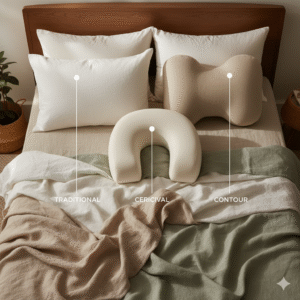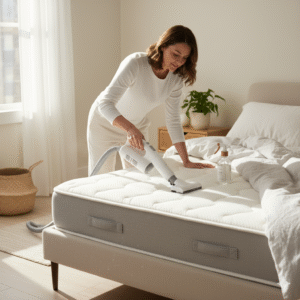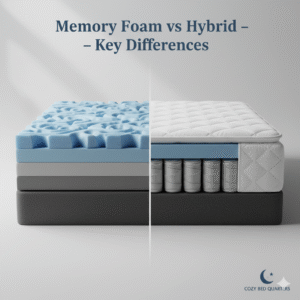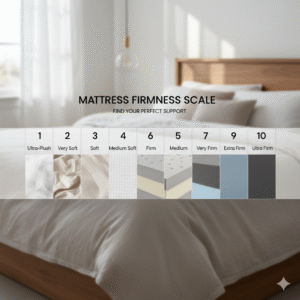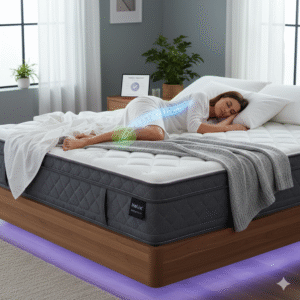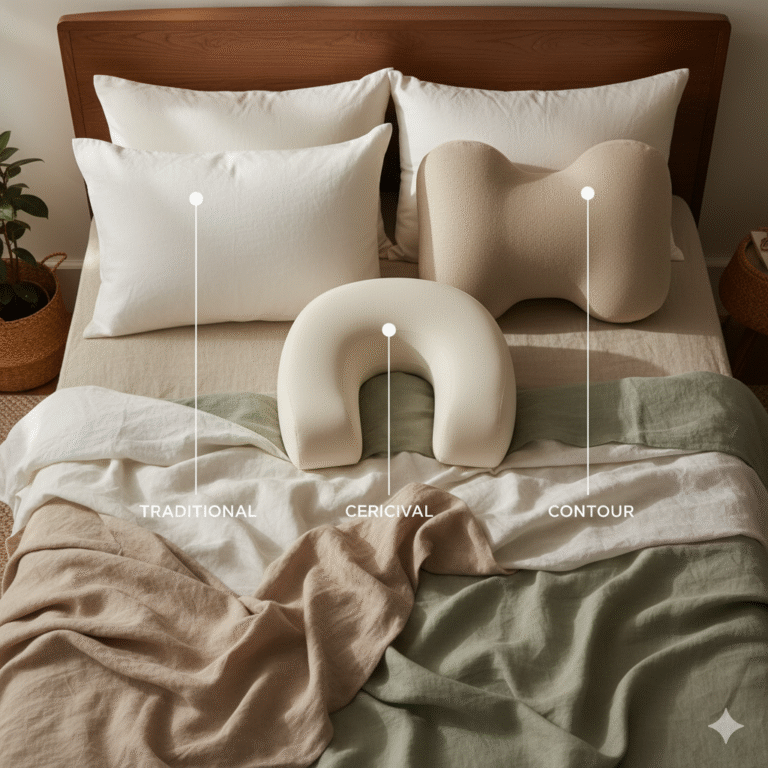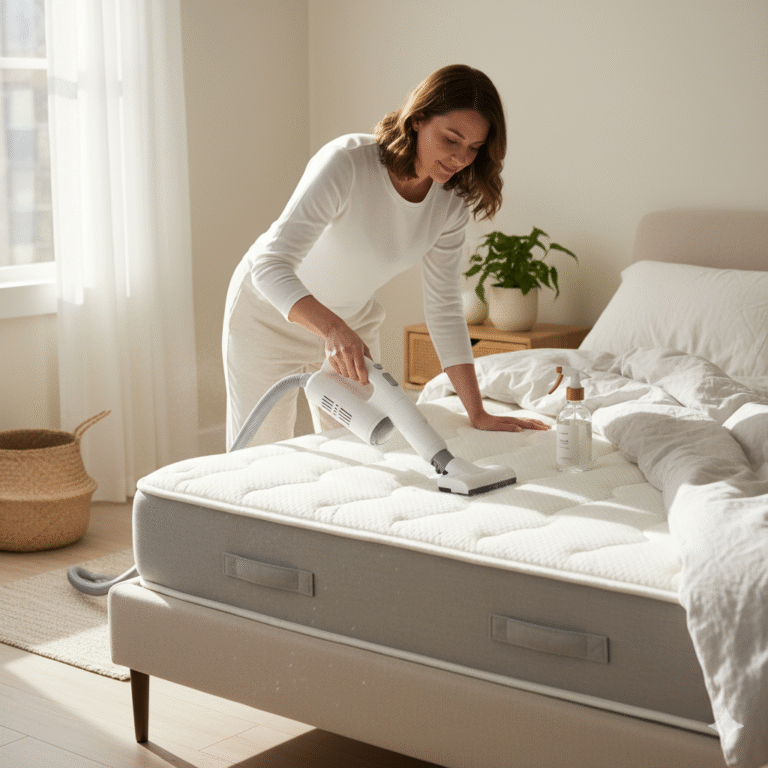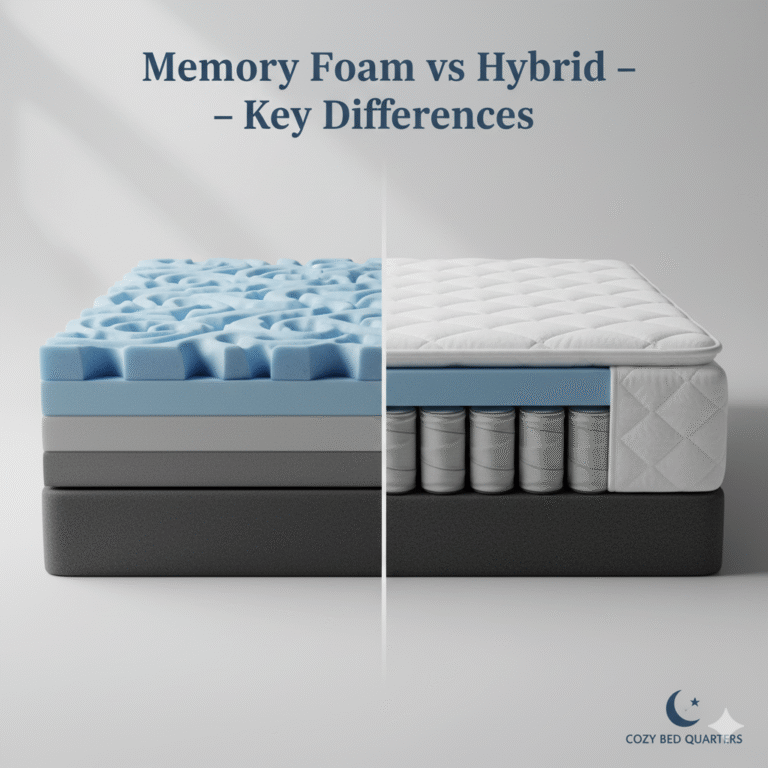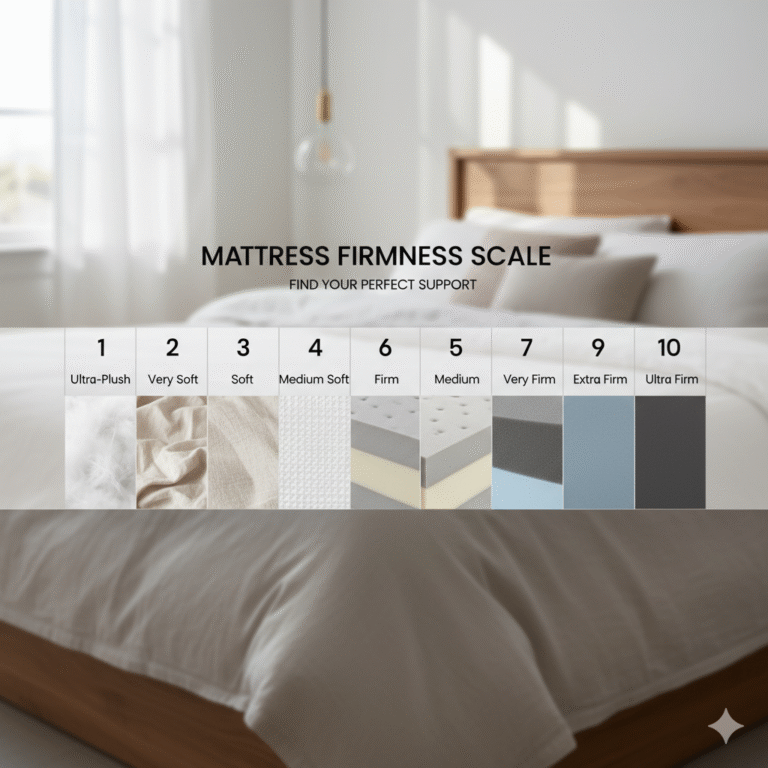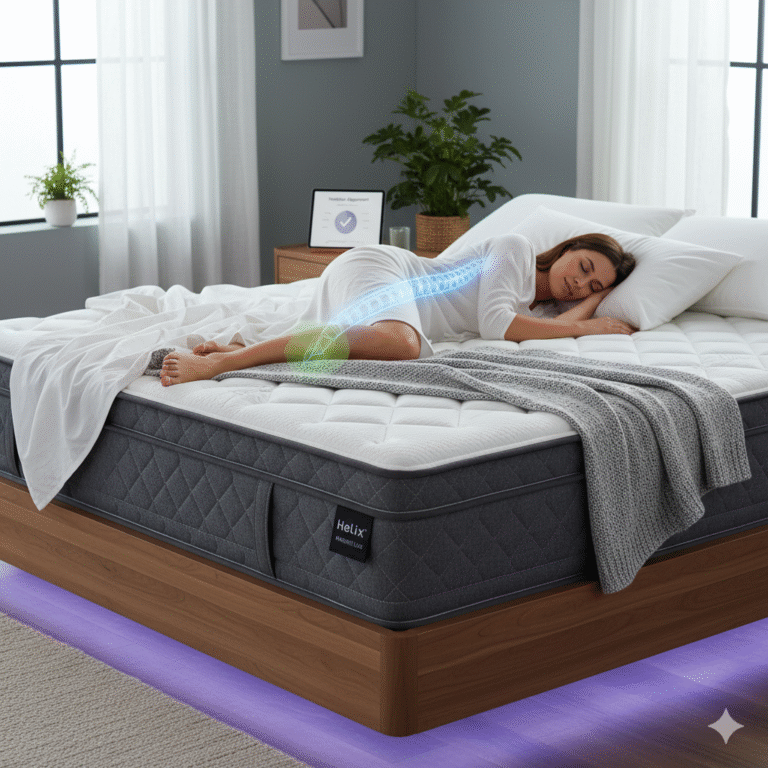Best Mattress for Back Pain:
If you wake up sore, this guide to the best mattress for back pain shows exactly how to pair proper firmness with ergonomic support—plus five smart mattress types to consider, quick in-store and at-home tests, and upkeep tips that keep your bed feeling supportive for years.
Key Takeaways
- Prioritize neutral spinal alignment: your ears, shoulders, and hips should stack naturally when lying down.
- Medium to medium-firm feels work for most, but body weight and sleep position can shift the ideal choice.
- Zoned coils/foams and reinforced lumbar support reduce sag and morning stiffness.
- Hybrids deliver bounce and airflow; foam cradles pressure points; latex balances both with durability.
- Use structured tests and a trial period to verify relief before committing to the best mattress for back pain.
Back Pain 101: Why Mattress Support Matters
Back pain often flares when the midsection sinks too far or when a surface is so firm that your natural lumbar curve collapses. The goal is a stable base that supports your pelvis and lower back, paired with a top layer that gently fills the small of your back. When alignment is right, muscles can relax and discs aren’t compressed overnight.

Firmness & Spinal Alignment Explained
Firmness isn’t one-size-fits-all. As a rule of thumb, lighter bodies (<150 lb) feel mattresses firmer and may need more cushion; average bodies (150–230 lb) often prefer classic medium or medium-firm; higher body weights (>230 lb) tend to benefit from robust support with thicker comfort layers. Side sleepers usually need more surface pressure relief, while back and stomach sleepers require extra lumbar stability to prevent swayback.

Top 5 Mattresses for Back Pain (Pros & Cons)
1) Zoned Hybrid (Pocketed Coils + Foam)
Why it helps: Individually wrapped coils provide targeted lift under the lumbar while allowing the shoulders and hips to settle. Foam on top eases pressure. Pros: great airflow, edge support, easy movement. Cons: quality varies; look for sturdy coil counts and meaningful zoning.
2) High-Density Memory Foam
Why it helps: Deep contouring fills gaps under the lower back and distributes load evenly. Pros: excellent pressure relief, motion isolation. Cons: can sleep warmer and feel slow to respond; ventilated or open-cell designs improve comfort.
3) Latex or Latex Hybrid
Why it helps: Naturally resilient and buoyant, latex keeps you “on” the bed, not “in” it, while still cushioning pressure points. Pros: durable, breathable, easy to move. Cons: typically pricier; feel is springier than memory foam.
4) Reinforced Lumbar Innerspring
Why it helps: Classic coil systems with a lumbar band or alternating-gauge rows resist midsection sag. Pros: responsive, cool. Cons: less contouring on top—pair with a quality pillow-top or foam layer to avoid pressure points.
5) Ergonomic “Zoned Foam” Builds
Why it helps: Softer shoulder zones and firmer midsection zones guide the spine into alignment. Pros: precise fit for mixed sleepers. Cons: zoning must match your body; test for shoulder comfort and lumbar lift.

Foam vs. Hybrid vs. Innerspring for Back Support
Foam: best pure contouring and pressure relief; choose denser bases to resist long-term sag. Hybrid: balanced feel with pushback from coils plus cushioned tops—often the most versatile for couples and combination sleepers. Innerspring: responsive and breathable; select models with true lumbar reinforcement and a substantial comfort layer to avoid pressure points.
Debating materials? Our deeper comparison of memory foam vs hybrid designs explains feel, cooling, motion isolation, and durability so you can pick with confidence.

How to Choose Based on Sleep Position & Weight
Side sleepers: aim for medium or medium-soft with lumbar support—your waist should feel gently filled and your shoulder should nestle without tingling. If you also sleep hot, a breathable hybrid can balance relief and airflow. Back sleepers: medium-firm with mild zoning keeps the pelvis from dropping. Stomach or combo sleepers: prioritize firmer cores and thin, supportive comfort layers to prevent swayback.
If shoulder pain competes with back pain, learn how to fine-tune pressure relief in our guide to the best mattress for side sleepers so both your shoulders and lumbar get the support they need.
Care, Replacement & Warranty Considerations
Strong support today won’t matter if the mattress sags tomorrow. Rotate new beds every 2–3 months in year one (then seasonally), use a breathable protector, and ensure your foundation meets manufacturer specs to keep warranties valid. When spills or odors happen, follow our step-by-step guide on how to clean a mattress to refresh the surface without damaging foams or fibers. Most quality mattresses last 7–10 years; replace sooner if you notice dips, new pain, or if your body or sleep position has changed significantly.

FAQ
- What firmness is best for back pain?
- Most people find relief on medium to medium-firm beds that support the pelvis while lightly cradling the lower back. If you’re lighter, you may prefer slightly softer; if heavier, a sturdier core prevents sag.
- Is foam or hybrid better for the best mattress for back pain?
- Both can work. Foam offers deep contouring that fills the lumbar curve, while hybrids add stronger pushback and airflow. If you sleep hot or move often, hybrids feel easier to reposition on.
- Do I need zoned support?
- Zoning isn’t mandatory, but firmer lumbar zones can reduce swayback and morning stiffness—especially for back and stomach sleepers or heavier bodies.
- How can I test a mattress for back support quickly?
- Lie on your typical position for 5–10 minutes. Your low back should feel lightly supported (not arched or collapsed) and you should be able to slip a flat hand under the small of your back with gentle contact, not a gap.
- When should I replace my mattress?
- If you notice dips, new aches, or you sleep better away from home, it’s time. Most supportive beds last 7–10 years, but heavy use, softer builds, or body changes can shorten that window.
Related Reading
Memory Foam vs. Hybrid: Which Supports Achy Backs Best?
Best Mattress for Side Sleepers: Pressure Relief Without Sacrificing Support
How to Clean a Mattress: Keep Supportive Layers Fresh
Other Reading We Found Helpful
Expert-tested best mattresses for back pain (Sleep Foundation)
How to choose a mattress: firmness, materials, and posture tips (Architectural Digest)
Mattress certifications explained and how to choose a non-toxic mattress (Ethical Bedding)

